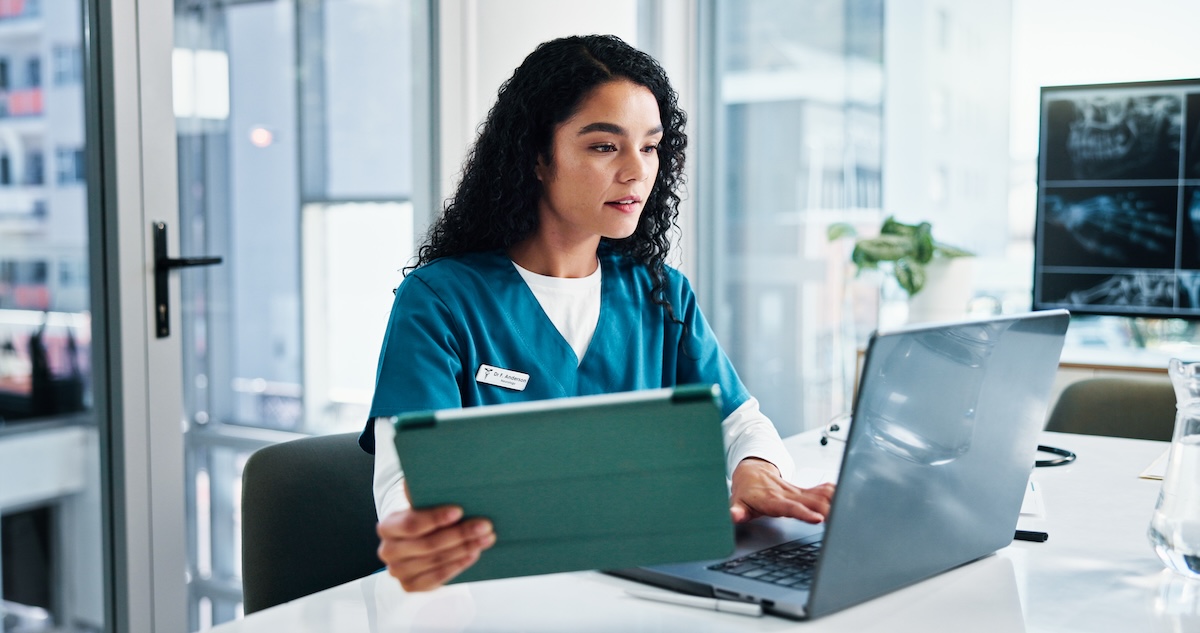Using Patient Education Videos to Support Preventive Care Strategies
As a healthcare provider, you know prevention saves lives. From routine screenings and lifestyle counseling to vaccinations and early detection,...
3 min read
Robert McDermott Jul 22, 2022 11:00:00 AM
 Without a doubt, one of the biggest concerns in any organization when looking to make upgrades and adopt new software is how well those changes will integrate with existing software. While we’ve reached the point of no return with our reliance on software and technology, that doesn’t mean it isn’t without obstacles and challenges.
Without a doubt, one of the biggest concerns in any organization when looking to make upgrades and adopt new software is how well those changes will integrate with existing software. While we’ve reached the point of no return with our reliance on software and technology, that doesn’t mean it isn’t without obstacles and challenges.
Many of us remember issues created with legacy systems where time-consuming workarounds, multiple machines, logging in and out of applications and even some necessary downtime was standard for implementing new software. It’s easy to understand why many practice managers and business offices would be reluctant to adopt new software. Software integration matters, especially as dental practices look to grow. What if new software, and the companies that develop it, understood your needs, your goals, and your existing tech?
Quick Links
 How Your Dental Practice Uses Software
How Your Dental Practice Uses SoftwareSoftware and applications are ubiquitous. There’s very little we do today in our daily lives at home or work that doesn't rely upon software. From smartphone applications that manage our contacts, our calendar, our access to information, and our social interactions to the office where software does much the same, we rely heavily on our technology.
As your business office can attest, when there’s a software problem or power/internet outage, everything comes to a grinding halt. Much of your dental practice, both business administration and patient care, relies on software, including:
With so much of your dental practice management relying upon software, it should come as no surprise that moving seamlessly between these applications, and having them be able to communicate with one another, is vital.
Software integration is the ability for independent software to work efficiently and effectively with other independent software applications. These can be from different developers and have different functions, but integration is often marked by the software’s ability to communicate with one another and share data.
Software integrations come in three methods:
API integration: Application Programming Interface (API) integration allows two or more applications to communicate, sharing data, without the need for a member of your team to initiate or facilitate the sharing. This is a popular method for cloud applications as multiple applications can pull data from the same cloud resources.
Native Integration: Native integrations are built right into the applications; the communication is part of the hard coding and doesn’t need to rely on external resources to work together.
Third Party Integration: Third party integration integrates two or more APIs into an existing application. For example, iCoreConnect’s software integrates with existing dental practice management software platforms like Dentrix.
In your dental practice, software integration means your practice management software can communicate with other software, improving both efficiency and accuracy. It means ePrescription software and automated insurance verifications can auto populate patient and related information.
It also means scheduling software can communicate with insurance verification, and coding software can communicate with billing. Additionally, reporting tools need to be able to pull data from various applications so you can get a full picture of the metrics that matter.
Software integration saves your team time and effort by improving your workflow and simplifying tasks. You also reduce potential errors by eliminating duplicate work.
 Choosing the Right Dental Insurance Verification Software
Choosing the Right Dental Insurance Verification SoftwareInsurance verification is a fundamental part of your dental practice, but it’s also often time-consuming and challenging. Automating your insurance verification process can save your team time and effort in turn saving your practice valuable resources including money. But not all insurance verification software is created equal.
One of your primary concerns should be integration. Software can have amazing functionality, but if it can’t communicate with your existing practice software, time-saving benefits are lost. For that reason, the iCoreConnect team ensured that the full platform of software, designed to improve efficiency, accuracy, and revenue in your practice, integrates with popular dental practice management software like Dentrix.
Additionally, iCoreConnect’s iCoreVerify automated insurance verifications allows your team to:
If you’re interested in learning more about how iCoreConnect’s suite of software can help improve accuracy, efficiency, and revenue at your practice, book a demo today. Our software was designed with your needs and goals in mind. We manage the technology so you can more profitably manage your practice and efficiently care for patients.

As a healthcare provider, you know prevention saves lives. From routine screenings and lifestyle counseling to vaccinations and early detection,...

There’s no denying that the AI boom is here. The American Medical Association reports that 66% of physicians are currently using artificial...

If only managing your practice’s revenue cycle came with a crystal ball. You could spot claim denials before they happen, predict when patients might...

As healthcare providers, you’re juggling a lot of responsibilities and priorities. Any tool available to you should not only be helping you meet your...

One of the greatest benefits of dental service organizations (DSOs) is their ability to allow dentists to focus on clinical care. But who’s helping...

ePrescribing software is no longer the new kid on the healthcare efficiency block. Though we’re seeing greater adoption, in part due to regulations...